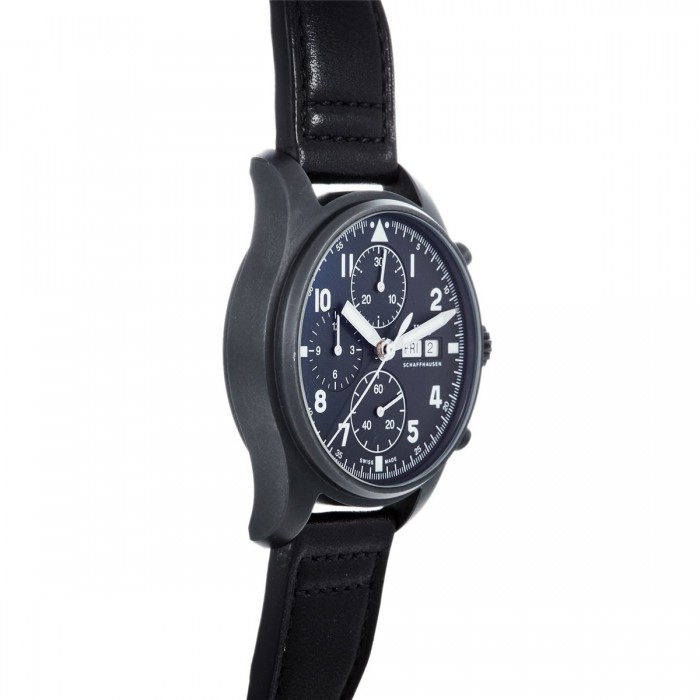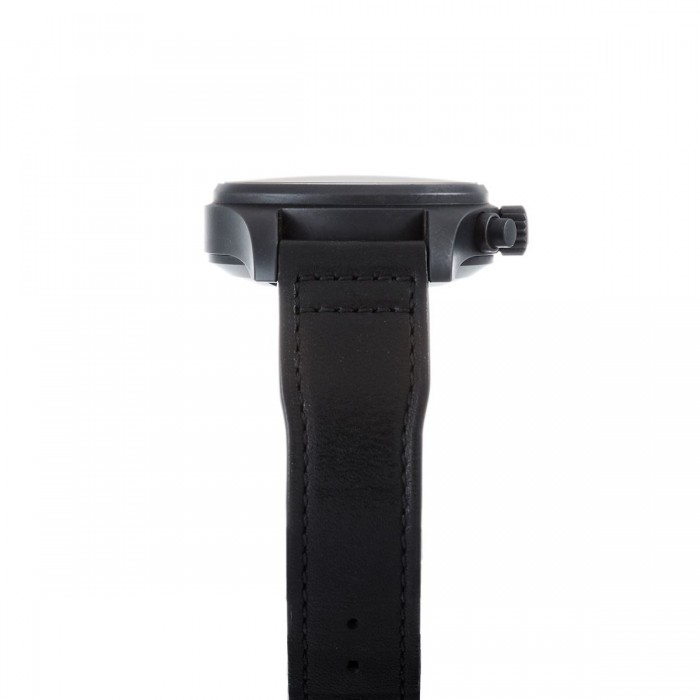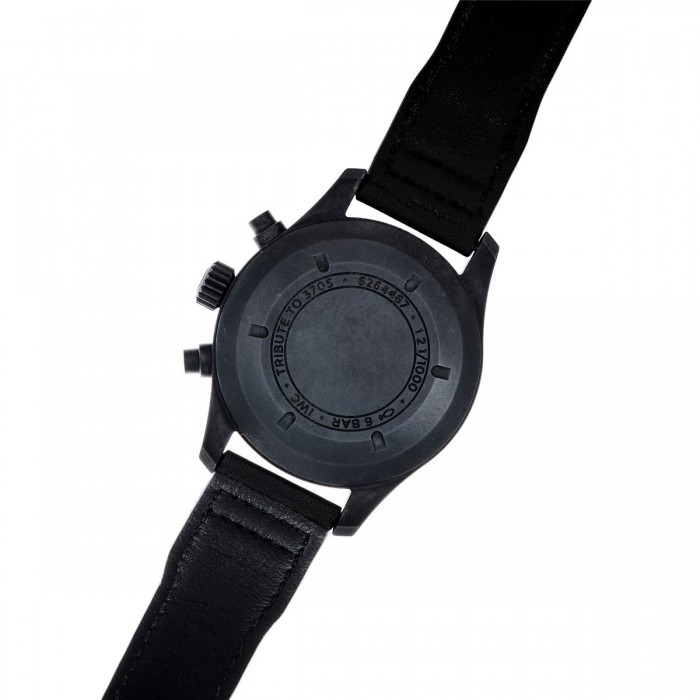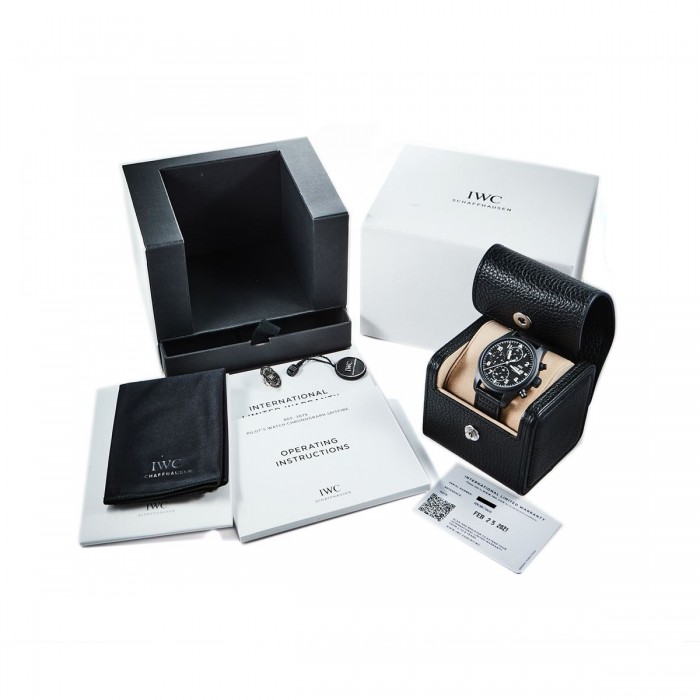Why We Love It
The IWC Reference 3705 may very well be the absolute definition of Neo-Vintage perfection.
Combining the traditional function-forward elements of pilot's watch design with a sensibly sized 39mm case, robust automatic movement, Tritium luminous indices and hands, and the groundbreaking first application of ceramic casing material for a sports watch, the 3705 was born a classic when it was introduced in 1994. To say that it was ahead of its time is most certainly an understatement.
Since its introduction, ceramic cases have been used extensively by IWC and other manufactures, but generally in (much) larger case sizes. As such, the 3705 started as something of a cult classic and has found widespread appreciation in recent years, with values doubling or even tripling across the board.
Then, in 2021 IWC released this - a tribute to the original 3705 from the 1990s. Limited to just 1000 pieces worldwide, this contemporary take on the cult classic offers everything that we love about the original, with just a few changes. The case size grows from 39mm to 41mm and and is finished in IWC's proprietary Ceratanium. Additionally, it utilizes IWC's Calibre 69380 and Superluminova for the luminous material throughout the dial and handset.
And that is it. A very faithful tribute indeed.
In near mint condition and accompanied by its full kit, this piece, like its predecessor, is sure to become a modern classic. Dont miss this one!
The IWC Pilot’s Story
The history of IWC can be said to be one of marriages. For example, a marriage of the Old World to the New, or of the craftsmanship and tradition of the Swiss with American innovations and technology. But perhaps the most enduring association is between IWC and aviation.
When an American watchmaker named Florentine Ariosto Jones arrived in Schauffhausen, Switzerland, he found a city almost frozen in time. Though the Industrial Revolution had swept through America (where Jones worked as a director of a prominent watchmaking company), in Switzerland the situation was very different. Watchmakers still plied their trades by their own firesides, as they had done for centuries; but Jones had in mind something different: an American-style factory where the watches would be designed and assembled in keeping with the old Swiss ways.
His methods caught on, and soon there were 196 people employed at his factory.
Though IWC was founded 35 years before Wilbur and Orville Wright’s first flight, the association between aviation and IWC began just as the aviation age dawned. A pocket watch made by IWC in the 1890s found its way into the pocket of one Robert Albert Lotter. Lotter was a pilot in the German Luftwaffe who served with distinction during the First World War.
Two decades later, in 1936, IWC would release a watch that set the standard, more or less, for what a pilot’s watch is supposed to be—in fact, this watch, the Spezialuhr für Flieger or Special Pilot's Watch, was the first specially-designed pilot’s watch. Another would follow in 1940, the Big Pilot, which has spawned an eponymous model in IWC’s current collection. However, despite the Big Pilot’s current popularity, it was the Special Pilot’s Watch that would lay the cornerstone for IWC’s most iconic line: the Mark series of pilot’s watches.
IWC released the Mark XI in 1948 according to specifications set forth by the British Ministry of Defense. These watches had to be legible, compact, and able to withstand exposure to the magnetic fields emitted by instruments in an airplane’s cockpit. The Mark XI, therefore, had a black dial with large luminous Arabic numbers, and the Calibre 89 movement (regarded as perhaps the best mechanical movement ever produced) was encased in an iron cage.
The Mark XI served as the basis for design inspiration for a robust line of pilot’s watches still being produced today – easily identifiable by their clean, uncluttered dials, robust cases, and outstanding quality.

No questions about this product, be the first and ask your question.

















